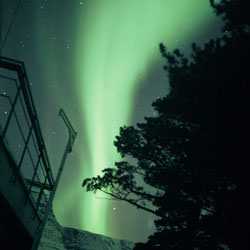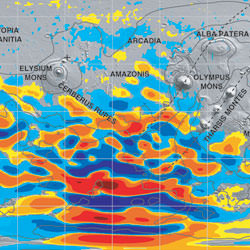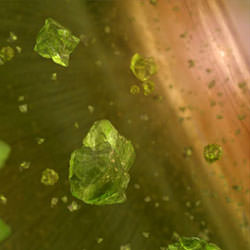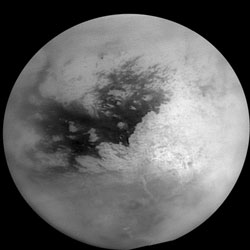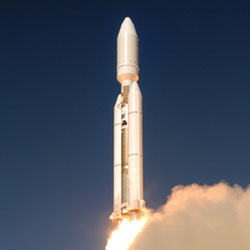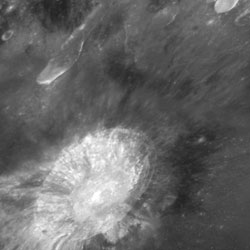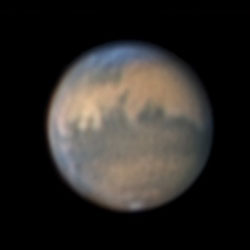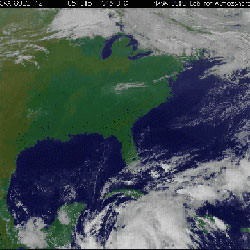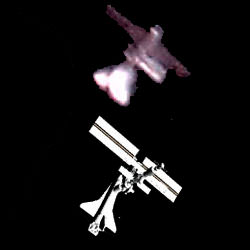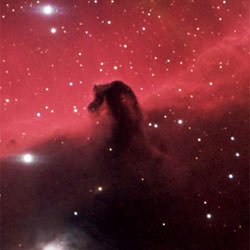
Horsehead Nebula by Tom Davis.
Listen to the interview: Astrophotography with Tom Davis (6.1 MB)
Or subscribe to the Podcast: universetoday.com/audio.xml
Fraser Cain: This is going to be one of those podcasts where I think people are going to want to sit in front of their computer at some point and take a look at your photographs, so just to let everyone know, I’m going to have them point their browser at http://www.tvdavisastropics.com. And so I recommend you get this up in your browser before you listen to the rest of the show because talking about astrophotos is kind of like dancing about architecture (to steal a phrase). Now Tom Davis, you’ve got some amazing pictures, and you’re an amateur photographer out of Idaho. Can you explain the setup you’ve got?
Tom Davis: I have a dome; it’s a clamshell dome in my front yard, and I live on the side of a mountain at about 5,700 feet above sea level. And in that dome – it’s a 7-foot dome – I have a pier, and on the pier is an Astrophysics 1200 GTO mount, which is an outstanding mount. And on the mount, I have a couple different variety of setups. Currently I have an Astrophysics 155 EDF refractor, and on top of that, riding piggyback is an Astrophysics 105 EDF f6 traveller refractor. And I use the traveller as a guide scope. The two cameras I use predominantly are both made by the Santa Barbara Imaging Group (SBIG). One is the STL 11000M; that’s the monochrome version. And then the other is the ST 10 XME. They’re both very sensitive cameras; they both do different things. Certainly the STL 11000 has a much wider field of view, and it’s an anti-blooming gate camera, which means the stars won’t get those funny spikes that you often see. It’s not quite as sensitive in the red spectrum, particularly hydrogen alpha, but it does a marvelous job, nonetheless. And certainly the ST10 is one of SBIG’s most sensitive and flagship cameras. So that’s what I have.
I have a computer in the dome. It sits on a little shelf, and it’s the computer that I have on a wireless system, and I actually sit in my kitchen when I image. I have a laptop in there that I’m actually looking at right now. Through the wireless network using real VNC, I can run the telescope and everything just from inside my house, so it’s awfully nice in the Winter.
Fraser: I was about to say that. It must get pretty cold there at that altitude.
Davis: It gets very cold at this altitude, but everything runs fine. People who live in really cold climates wonder if their camera’s going to run, or if their mount is going to run, or is it going to hurt the telescope, and the answer to that is absolutely not. With some very simple precautions, everything runs great. I’ve been imaging down even to -20 degrees.
Fraser: What kind of investment have you put in to get yourself to the level of equipment that you’ve got today?
Davis: Well, this hobby, obviously can require a lot of money – 10s of thousands of dollars. Certainly that’s where I am at with this investment. However, for people who want to just start imaging with CCD, the cameras nowadays are so affordable, and far better than the cameras that I first started out with. Literally they can get very good images for a couple of thousand dollars. Even simple telescopes, such as a simple refractor. Even if it’s not one of the high-end ones, and a simple camera, can give you very good images that a lot of people would be absolutely delighted to take. So yes, it’s one of those high-end hobbies, unfortunately, it does require a lot of money once you really get into it. But I highly encourage anyone, any amateur, any visual astronomer out there – if they’re interested at all – now is the time to get into imaging; the software is much better to get into, the mounts, the telescopes, and even the cameras are just phenomenal now.
Fraser: Yeah, that’s been my impression in seeing the quality of the astrophotos that amateurs are taking. I just seemed like in the last couple of years, the photos sent in have just blown me away. And so, what kinds of advancements have been made in the last little while that’s made this so possible?
Davis: Well I think the biggest thing is the understanding that to get really high quality images, you need to put a lot of time into your image. The film astroimager would take 50 minutes to an hour open shutter images, and then take two or three of those and then combine them. Well, in CCD imaging, you don’t do that. Essentially we take subframes. Typically 5-10 minutes, maybe 20-25 minutes at the most on specific narrow band filters like a hydrogen alpha. And you take a whole series of those or 6 or 7 or 10, and then digitally you stack them. In the past we were just so thrilled with the images that we were getting, we were only shooting total imaging times of maybe an hour to 1.5 hours, and those were great images. The one thing interesting about CCD imaging is that the more time that you spend taking – in other words, more data, more photos you’re actually registering – the better the quality the image, and the less noise that comes from the sky. One of the main things that you’ve been seeing over these last couple of years is that most of us now don’t image for the average object, let’s say an average nebula, we really don’t image for anything less than 3 to 3.5 hours now. And so it’s a lot of time, sometimes over multiple nights, but when you stack all that data, the noise really reduces quite dramatically, and you start seeing these really beautiful and beautifully detailed images. I think the other thing that has really advanced, at least amateur astroimaging with CCD cameras, are large diameter telescopes. Now the largest I have right now is a 10″, I have a Takahashi BRC 250, which is a Ritchie Chretien type telescope. I haven’t really imaged with it much because I’ve been doing things mainly with the Astrophysics, but this Winter I’ll start using the Takahashi. A lot of guys have Ritchie Chretiens that are now 12.5″ or 14″ or 16″, and even one guy that has a 32″. These are amateurs and that aperture of telescope used to only be in the realm of professionals, well now some guys have those sizes of telescopes. Unfortunately, that style of telescope, the optical design is extraordinarily expensive and so it really limits for just everybody to buy that. But those two things are the main things. And then finally the camera technology; really the cameras and many of the chips are similar to what we’ve had in the past, but now we have much larger chips – similar sensitivity but they’re much larger, like this STL. It’s really opened up some beautiful vistas we can take.
Fraser: And do you find that your telescope and imaging setup can contribute to science as well?
Davis: Oh absolutely. The average amateur with a 6″ telescope and a CCD chip can do phenomenal science. I freely admit that I’m not a scientist, and I don’t think that my images are scientific quality. They like a certain type of data, but yes. If you were taking images of galaxies, you can discover new supernovae; we recently saw that in the Whirlpool Galaxy, an amateur discovering that. I’ve recently taken a picture this summer of M31 and was able to compare it to some of the pictures taken from the Palomar surveys of past, and I can actually pick out the Cephied variables of M31, and globular clusters around M31 just off of my image, my 6″ refractor. And if I wanted to do Cephied variables from M31, I could actually do that, so without question. There’s even been a couple of amateurs who have discovered new extra solar system planets with small telescopes, using the right software and having that right savvy to watch the data, so absolutely. The amateur now is able to contribute to science and many of the professional astronomers are going into collaboration with amateurs, and so it’s very exciting, not just pretty pictures, but you can actually get scientifically worth data.
Fraser: It sounds like a great time to be taking these photos.
Davis: Absolutely, it’s a great time for anyone who really wants to image, they can get in. You can get CCD cameras now – they are expensive, but you can get used cameras and take some very very nice pictures, and see more detail in a 60 second simple monochrome picture of, let’s say, M42 than you can in an eyepiece if you just have an ordinary aperture telescope. So it is a very exciting time.

